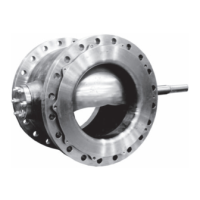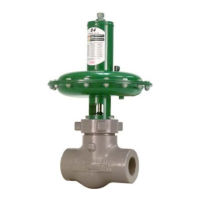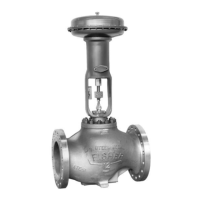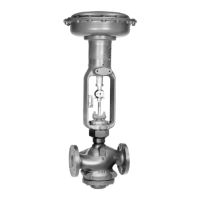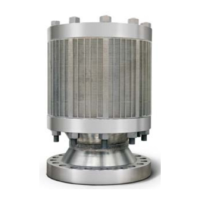Instruction Manual
D100423X012
V500 Valve
July 2017
20
NPS 1 through 2 VTC valve plugs are sold only as a set that includes N10276 pins. Use only the pins that are furnished with
the set.
Components of the VTC valve plug assembly for the NPS 3 through 8 cannot be repaired in the field.
11. Place the chamfered end of the expansion pin (key 9) into the larger hole in the plug hub (see figure 11).
CAUTION
To avoid damage to the expansion pin, valve plug, or shaft resulting from the application of excessive force on the
expansion pin, use appropriate care when driving the expansion pin through the plug hub and shaft. Use the right tool. Do
not use excessive force.
12. Drive the expansion pin into the larger hole until the chamfered end of the pin reaches the inner lip of the smaller
hole on the opposite side of the plug. Closely observe the progress of the pin to avoid striking it after it has reached
the lip of the smaller hole.
13. Place the taper pin (key 10) into the open end of the expansion pin. Drive the taper pin into the expansion pin until
the pins, plug, and shaft are snug. Do not attempt to drive either pin flush with the hub.
14. Rotate the plug by hand to check that it rotates properly. If rotation interferes with the valve body, drive out the
pins (keys 9 and 10), remove the valve shaft (key 3), and repeat this procedure starting with step 4.
15. If used, install the pipe plug (key 29).
16. If the seat ring (key 4), face seals (key 8), and retainer (key 5) need to be installed, complete the assembly
instructions in the procedure for Replacing Retainer, Seat Ring, and Face Seals. If the seat ring has previously been
installed, proceed to Adjusting Actuator Travel.
Adjusting Actuator Travel
Perform this procedure whenever the actuator is removed or disconnected from the valve and whenever the seat ring
and retainer (keys 4 and 5) are removed. Actuator travel that is too short will increase shutoff leakage; too much travel
will cause excessive plug and seat ring torque.
Any of the Fisher pneumatic (spring‐and‐ diaphragm, piston, or spring‐return piston), electric, electrohydraulic, or
manual actuators‐‐or any other operator‐‐must be adjusted for use with a V500 valve so that the valve plug is rotated
to the fully closed position. The fully closed position is obtained when a gap of 0.001 inch exists between the seat ring
(key 5) and retainer (key 4).
Note that this gap is also measured when assembling the seat ring, retainer, and face seals to ensure correct assembly.
Measure the gap according to this procedure to ensure proper actuator adjustment. Merely completing the assembly
measurement is not sufficient.
Travel for different actuators is adjusted differently (some use turnbuckle assemblies; some use externally adjusted
travel stops; others use internal limit switches). Refer to the actuator instruction manual for adjustment instructions.
1. Mount the actuator following the instructions in the actuator instruction manual. Refer to figure 3 to select
actuator mounting style and position and to orient the actuator lever with the valve shaft (key 3).
2. For actuators with clamped levers,
CAUTION
When installing the actuator onto the valve, do not use a hammer or similar tool to drive the lever or actuator onto the
valve shaft. Driving the lever or actuator onto the valve shaft could damage the valve plug, seal ring, and other valve
components.
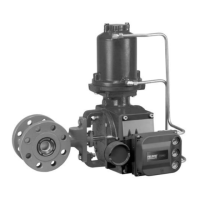
